Blue-Colored Bees
Blue-Colored Bees
Several Species
Even one blue-colored bee sounds like it may be a fictional creature, but not only do they exist, there are several different species of blue bees. These species live in different areas, pollinate different plants, and are even different colors of blue. In this blog, we look at five incredible blue-colored bees. 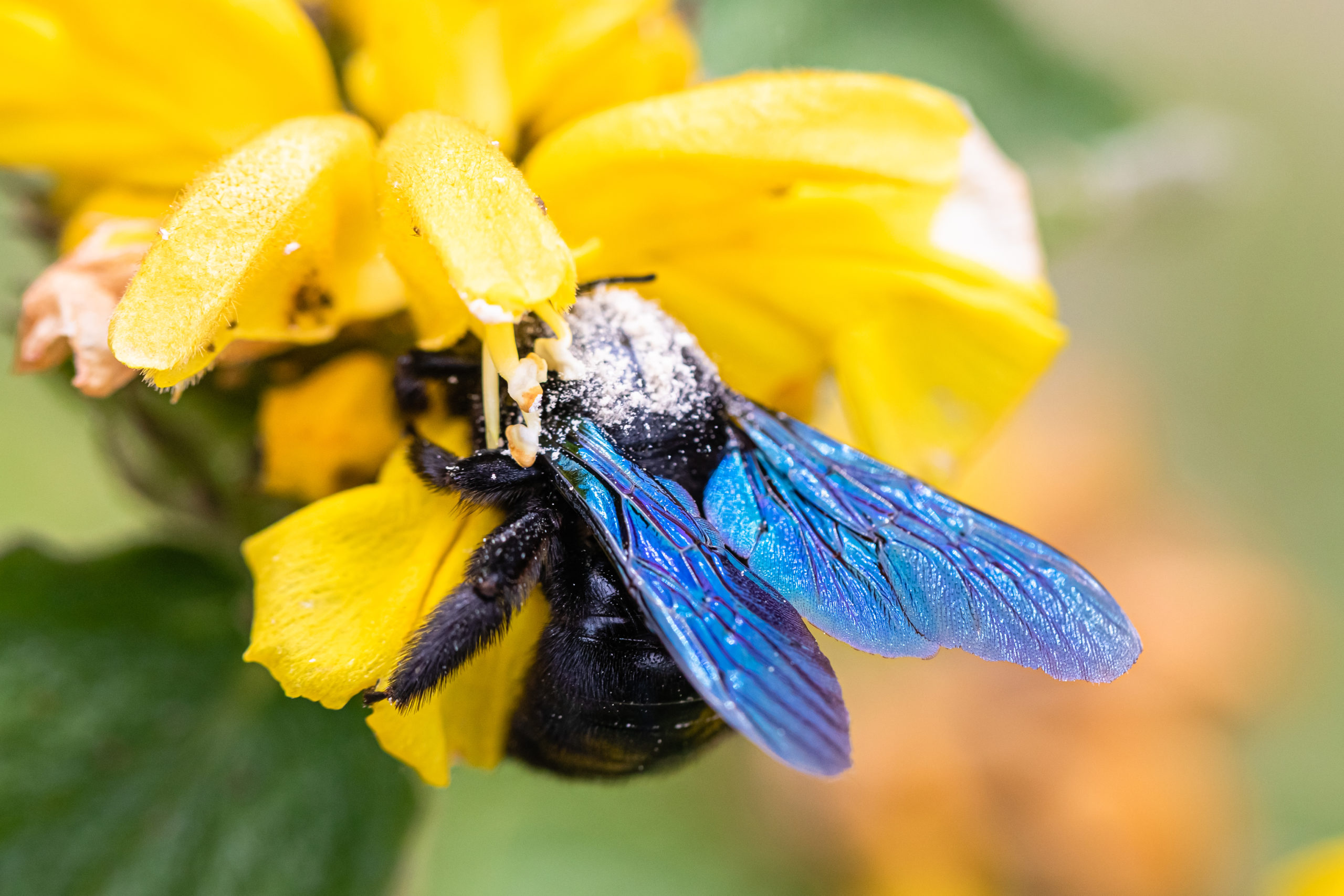
1. The Blue Orchard Bee/Blue Orchard Mason Bee
Scientific Name: Osmia Lignaria Natural Habitat: Canada and the United States – woodlands and forests Pollination: Fruit trees (apple, cherry and pear), blueberry bushes, almond trees These bees are iridescent dark cobalt blue with furry exteriors. They are solitary creatures that like to feed on the nectar of a variety of fruit-bearing plants. In the areas that they inhabit, the Blue Orchard Mason bees are debatably more effective than honeybees in their pollination contributions. 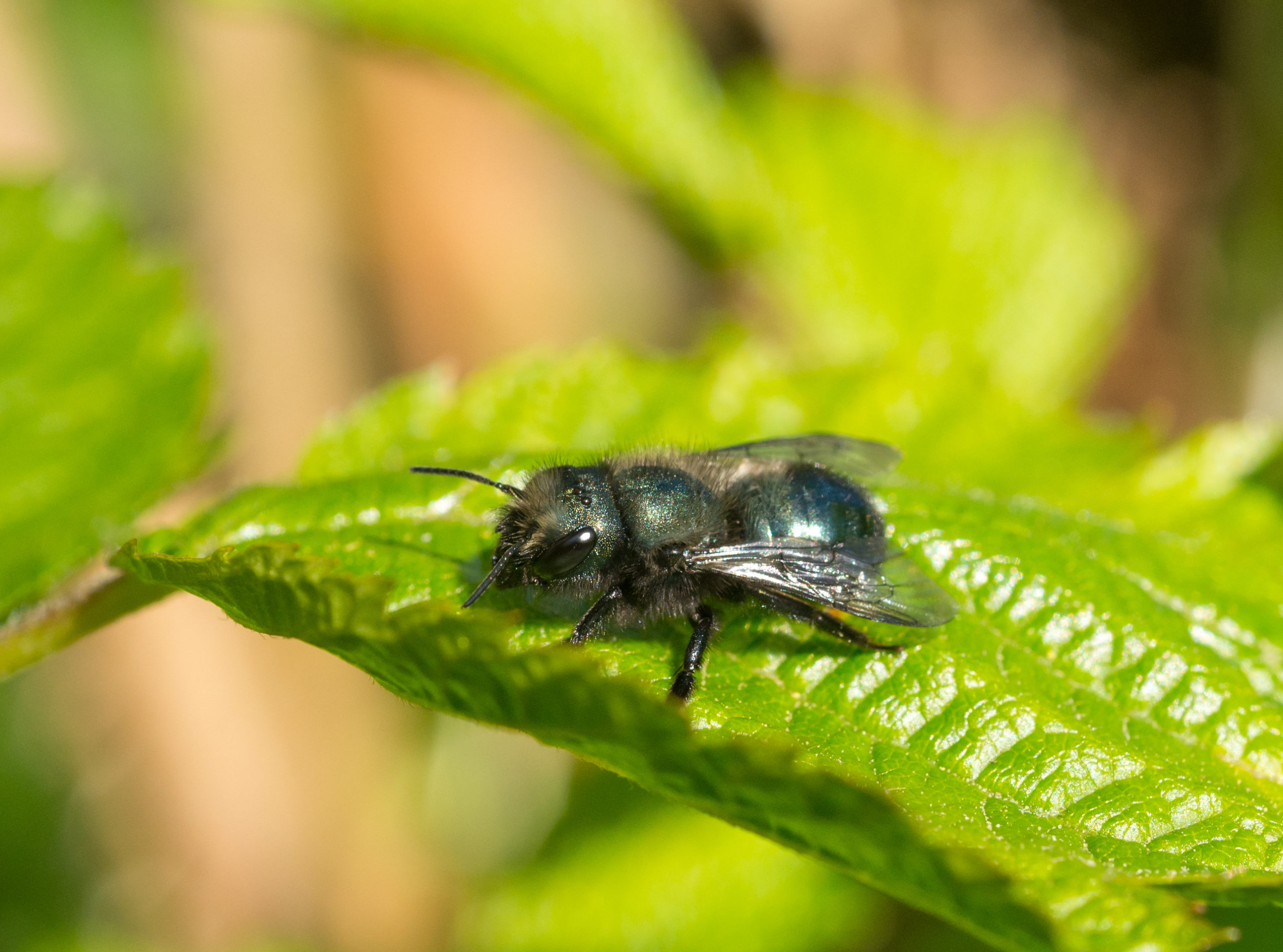
2. The Blue Calamintha Bee
Scientific Name: Osmia Calaminthae Natural Habitat: Florida, USA (Lake Wales Ridge in Highlands County) Pollination: Ashe calamint (aka. Ashe’s savory flowers) This rare species of blue bees was thought to be extinct up until recently when they were rediscovered in the Lake Wales Ridge region of Florida. Director of the McGuire Center for Lepidoptera and Biodiversity, Jaret Daniels, describes them as, “highly specialized and localized bee[s].” In 2019, they were listed as the “Species of Greatest Conservation Need” in Florida’s State Wildlife Action Plan and conservationists such as Chase Kimmel of Florida’s Natural Museum of History are actively studying these solitary bees in an attempt to help protect them. 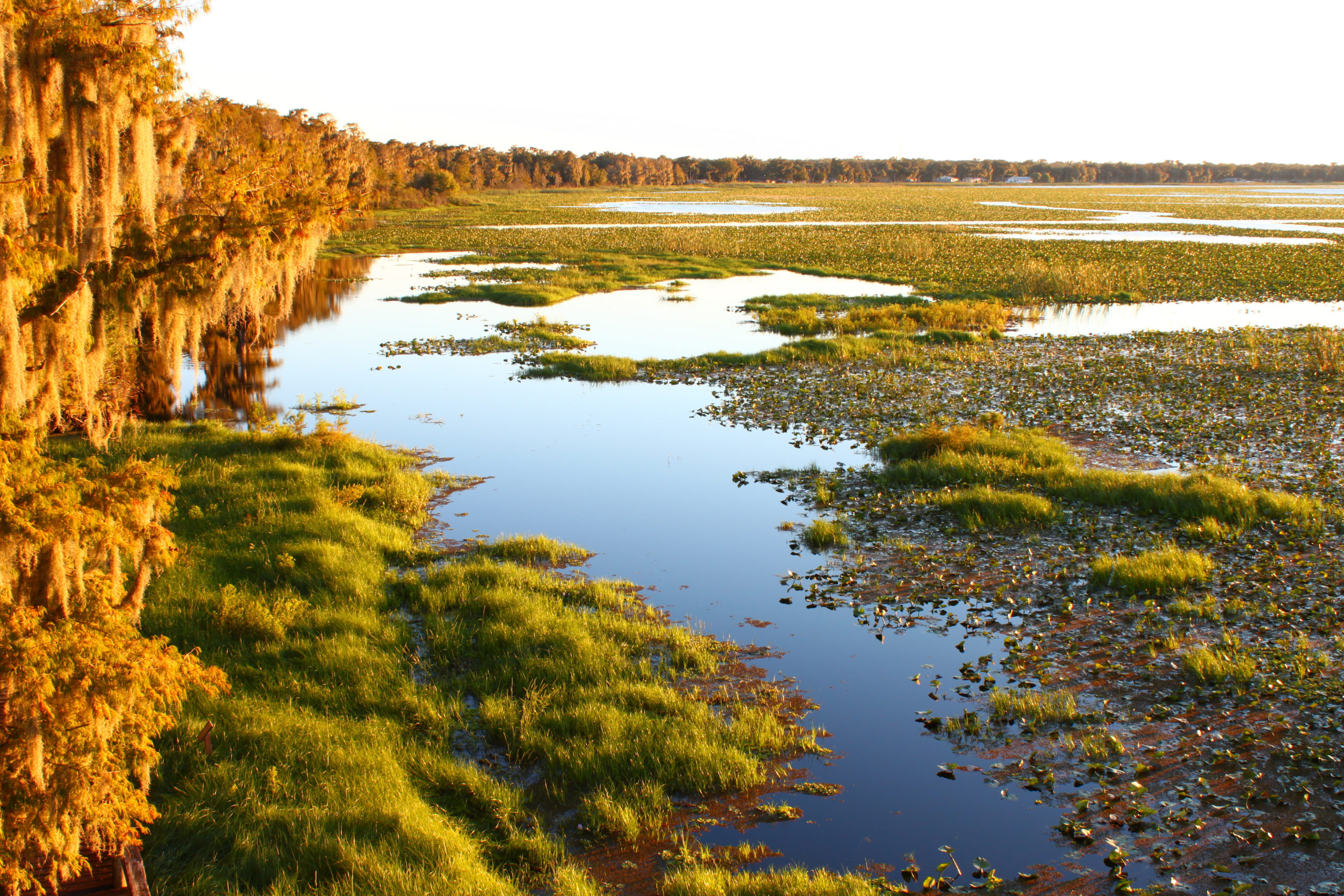
3. The Blue-Banded Bee
Scientific Name: Amegilla Cingulate Natural Habitat: Australia, Malaysia, Indonesia, Papua New Guinea, and East Timor Pollination: Kiwi, blueberries, eggplant, peppers, tomatoes, flowers (including: Sweet Alison, Lantana Camara, common Ragwort, Matted Flax-Lily (an endangered flower), and more) As their name suggests, the metallic blue on these bees is arranged in stripes alternating between the bright blue and a jet-black color. The banding stretches down their abdomen while their thorax is covered in a golden-colored fur. The Blue-Banded Bees are massively important in Australia with regards to their agricultural systems as they are responsible for pollinating roughly 30% of the crops in the areas they inhabit. 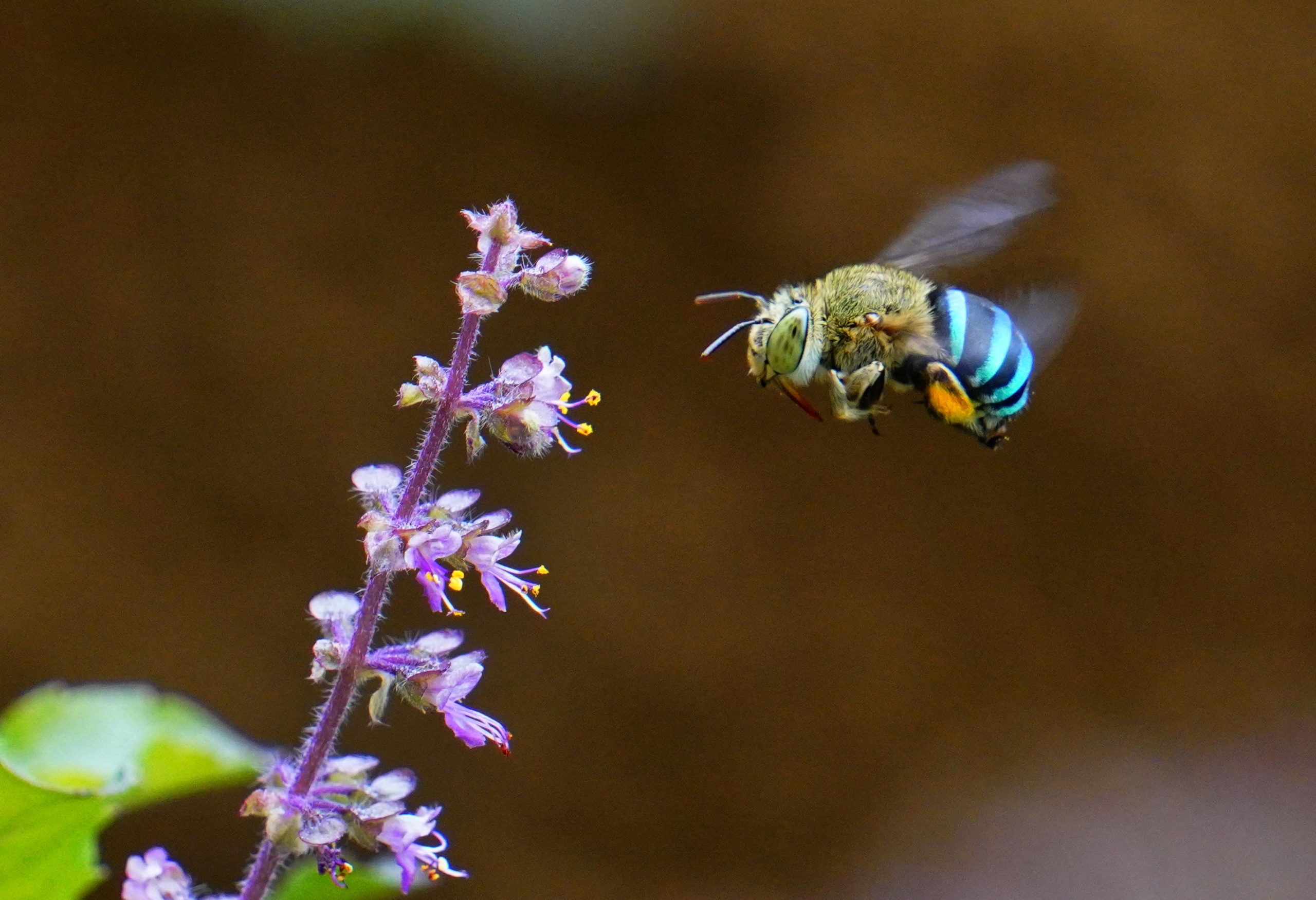
4. The Blue Carpenter Bee
Scientific Name: Xylocopa Caerulea Natural Habitat: India, Southeast Asia, Southern China Pollination: A large variety of flowers Blue Carpenter Bees have bright blue furry bodies and can grow to be rather large, up to 1 inch in length. As with all species of carpenter bees, they make their homes in wood, boring into the structures similar to termites and carpenter ants. 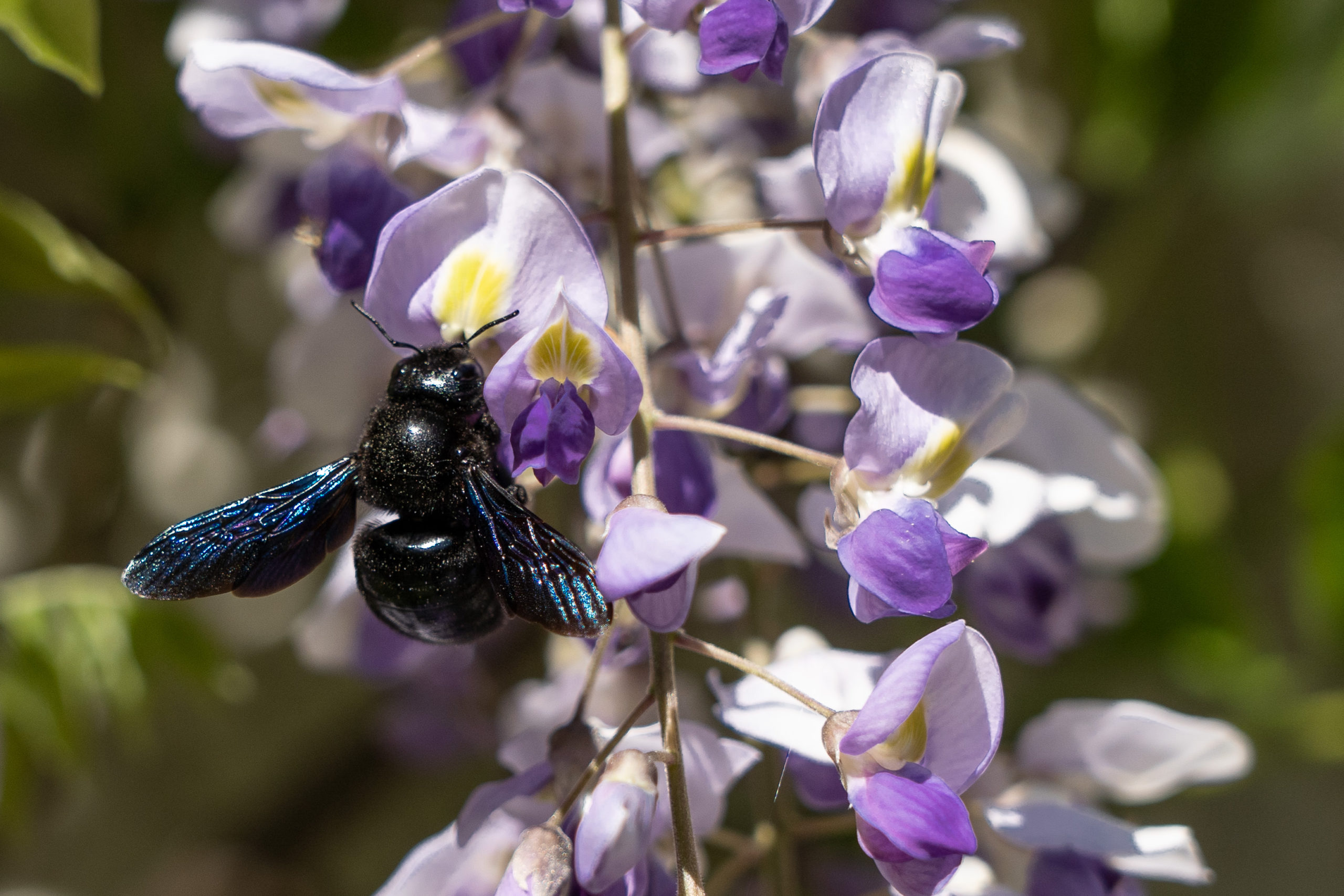
5. The Neon Cuckoo Bee
Scientific Name: Thyreus Nitidulus Natural Habitat: New South Wales, Queensland, Australia, New Guinea, and Southeast Asia – forests/woodland areas and urban areas Pollination: A large variety of plants Cuckoo birds are known for laying their eggs in the nests of other birds in order to have their young raised by the other birds. Neon Cuckoo Bees are so named for doing the very same with their young, and for their famously bright neon aqua-blue bodies. While they do dine on a large variety of plants, they have a strong preference towards the Brazilian Button Flower (Centratherum punctatum). 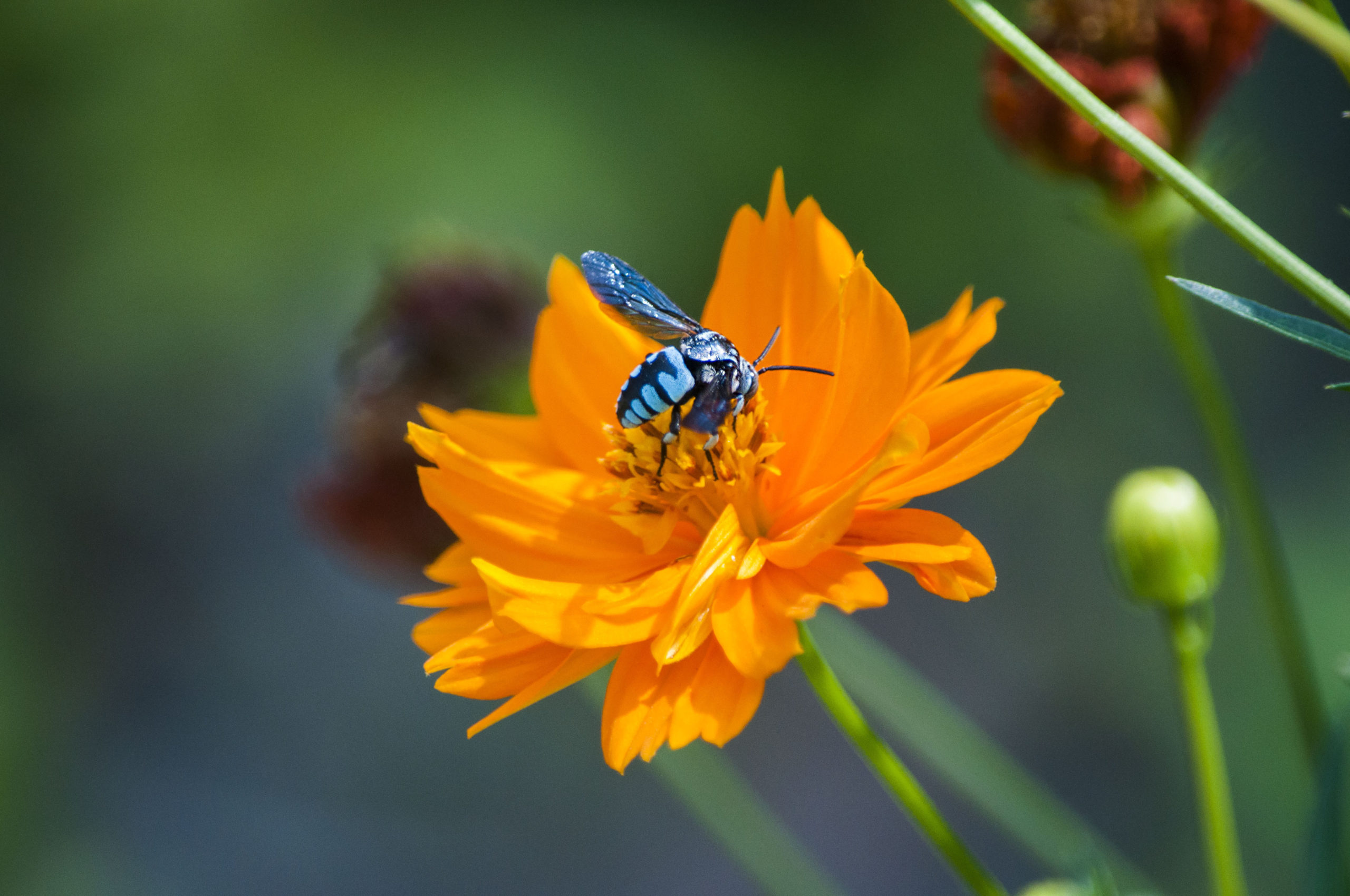
Citations
Kendall, J. (2020) Blue bee feared to be extinct is found in Florida, Smithsonian Magazine. The Smithsonian Institution. Available at: https://www.smithsonianmag.com/science-nature/blue-bee-feared-be-extinct-found-florida-180974957/ (Accessed: August 11, 2021). Moisset, B. and Wojcik, V. (no date) Blue Orchard Mason Bee (Osmia lignaria), U.S. Forest Service Shield. The United States Department of Agriculture. Available at: https://www.fs.fed.us/wildflowers/pollinators/pollinator-of-the-month/mason_bees.shtml (Accessed: August 11, 2021). Srinivasan, N. (2020) Florida’s Rare Blue Bee Rediscovered at Lake Wales Ridge, Florida Museum. The University of Florida. Available at: https://www.floridamuseum.ufl.edu/science/floridas-rare-blue-calamintha-bee-rediscovered/ (Accessed: August 11, 2021). Stanton, K. (2020) 5 blue Bees: Facts about these Stunning Pollinators, UniGuide. Available at: https://www.uniguide.com/blue-bee-facts/ (Accessed: August 11, 2021).
Request a Free Quote Today
(We do not share your data with anybody, and only use it for its intended purpose)


